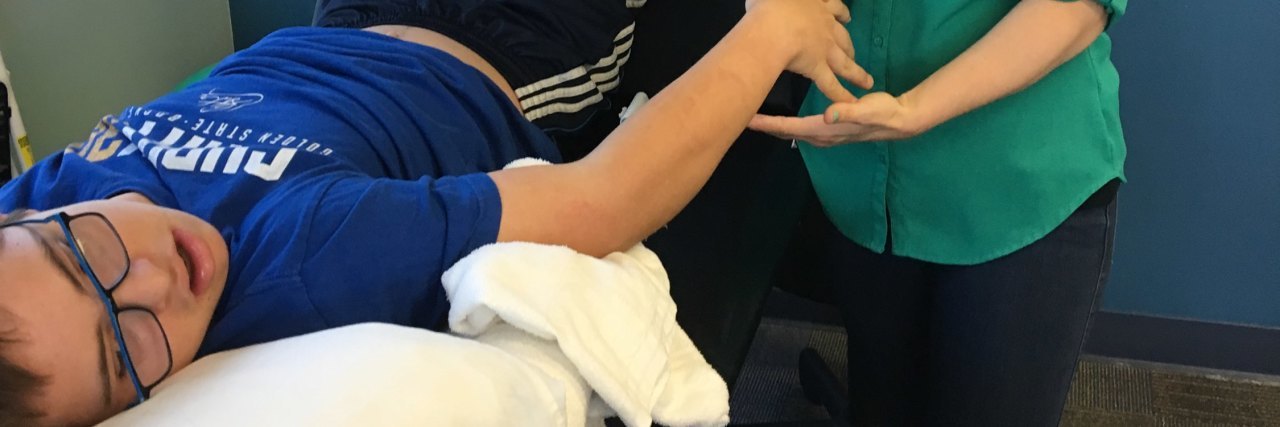Recently I learned an important lesson about making learning style modifications for people with developmental disabilities. During the summer, my son George who is 13 and has Down syndrome fractured his elbow. About a week after the cast was removed, he had several physical therapy sessions. On the first day, he was given some heating pad treatments and asked to bend and then straighten his elbow to test for range of motion.
“Bend your elbow as much as you can,” the therapist said.
“I can’t!” George immediately shouted. He had me convinced he couldn’t bend it.
“Pretend you’re eating an ice cream cone,” the physical therapist said.
Suddenly George’s arm bent as he moved his elbow. His hand went to his mouth and he pretended to lick the cone. Apparently he could do this task the whole time, but needed a more appealing prompt to motivate him.
“When you are asking him to do exercises, make it functional,” the therapist advised.
Rewording and role-play improved the outcome. It was like magic! Could all modifications be this easy? As a mom and also a teacher I know modifying can be a challenge. But I do believe some modifications can be really simple, like:
Make it fun
George needs to do some work on his handwriting. It is not always neat or easy to read. He hates practicing printing in a traditional workbooks, but he loves to write lists of NFL football teams. He plays a game where he makes NFL matchup lists. This makes practicing his penmanship so much fun, he doesn’t know (or mind) that he’s doing it.
Child interest centered
When George was younger he was fascinated by Thomas the train engine. Doing math problems on a plain sheet was hard to complete, but doing a few problems on a sheet with a picture of Thomas or his friends suddenly made math bearable.
Clear, positive and specific
“Do this” or “Don’t do that” will not work for George. He needs specific and positive feedback. Providing a rationale is also helpful.
Give choices
A pediatrician once told us. “Tell him to get into his bed by going in from the left side or the right side. Whatever way he picks, the end result is he is in bed.” George feels empowered if he can have some choice over what he does.
By getting creative and making some minor, yet significant modifications, George is able to be more successful. Lesson learned!

